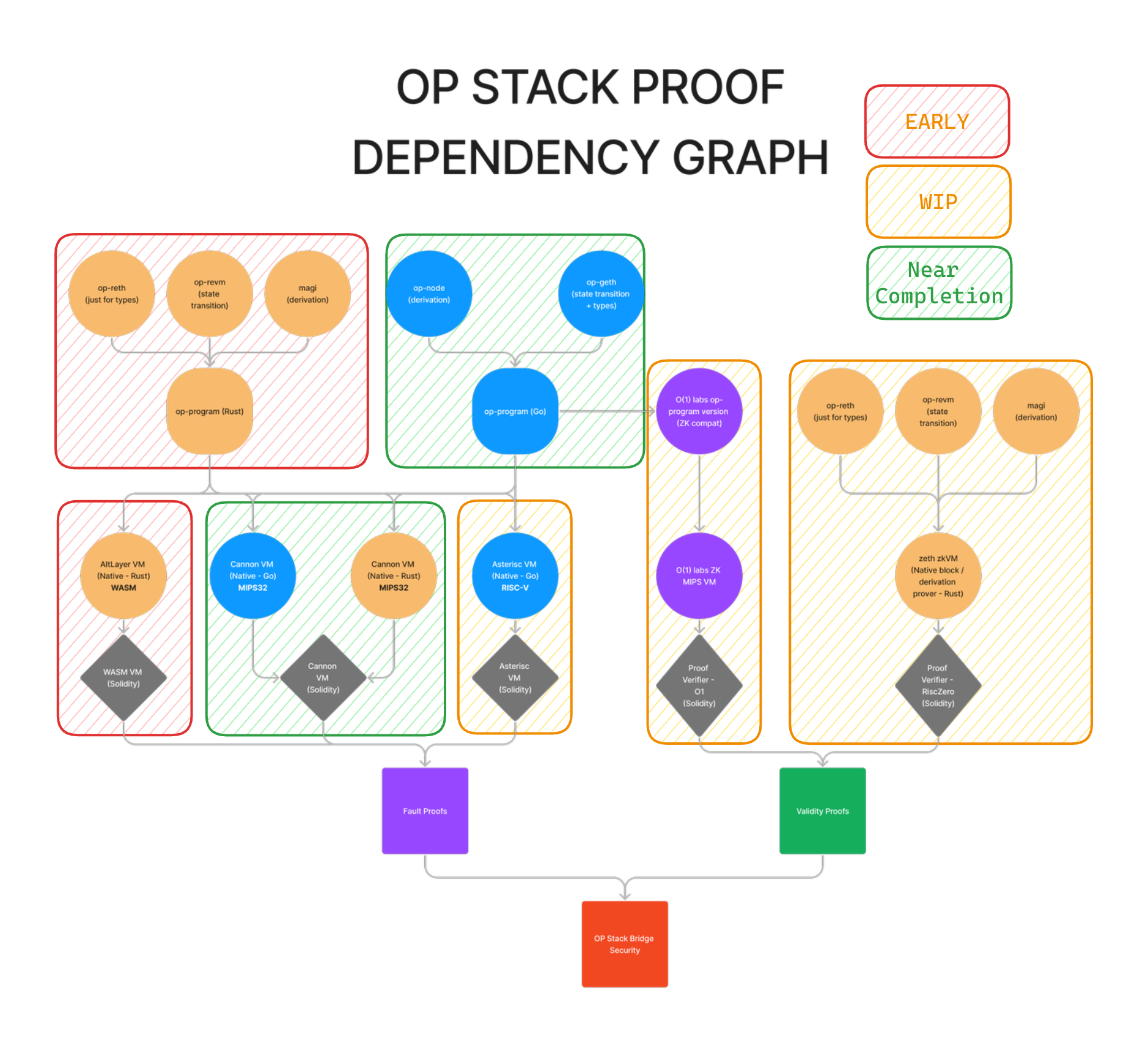Open-source and feature-complete fault proofs bring permissionless validation to the OP Sepolia testnet
Feature-complete fault proofs are live on OP Sepolia! This milestone testnet release lays the foundation for a "multi-proof nirvana" and Stage 2 Superchain.

The feature-complete OP Stack fault proof system landed today on OP Sepolia, the primary testnet for OP Mainnet. This fault proof protocol supports an incentive-compatible bonding mechanism and permissionless validation that allows anyone to participate in the system without an allowlist.
While every developer who contributed to this release is proud of this milestone, ecosystem engineers are already looking ahead to achieving “multi-proof nirvana” that will allow Optimism to reach Stage 2 decentralization. Keep reading to learn more about how this release lays the foundation for a Stage 2 Superchain.
Permissionless proofs on OP Sepolia
Today’s testnet launch introduces a feature-complete fault proof protocol that supports permissionless validation. This means that withdrawals of ETH and ERC-20 tokens from OP Stack Chains can be initiated without involvement from any trusted third party. It also means that invalid withdrawals can be challenged and removed by any user that wants to participate in the protocol.
Permissionless validation isn’t the only thing being introduced in this release. This launch also includes a framework for fault proofs for the OP Stack that means additional proof systems, like Asterisc, can easily slot into existing smart contracts. Additional proofs can act as safety nets that catch bugs in other proofs, which ultimately opens the door to Stage 2 decentralization— a complete reliance on the fault proof system with no backup security council. If this upgrade is accepted for inclusion into the OP Stack by Optimism Governance, Optimism will be uniquely positioned in the race to multi-proof capabilities and Stage 2 decentralization.
Obviously, like the journey towards achieving Stage 2 decentralization, all of the features of this fault proof system will be much more meaningful when they go into production on Superchain mainnets. Even so, this testnet launch is a critical step in the process of shipping a fault proof system to the OP Stack.
Next stop: multi-proof nirvana
The ultimate ambition of the OP Stack’s fault proof system extends beyond the implementation of fault proofs on testnet or mainnet; it aims for a “multi-proof nirvana” that can end the reliance that L2s today have on security councils or multisigs. When there are more proof systems in place that can back one another up, the OP Stack can begin to trust its proofs completely, without the need for a security council acting as a safety net.
With a feature-complete fault proof system live on OP Sepolia, significant progress has been made on the first proof scheme for the OP Stack. Yet the open source nature of the system means that a number of other proving mechanisms have been in development at the same time, including by teams like State Channels, RISCZero, O(1) Labs, AltLayer, Protolambda (at OP Labs), Test in Prod, and engineers Willem Olding and Eric Tu.
For a refresher, here are some of the proof schemes currently in development:

The modular and open source OP Stack launched with the Bedrock upgrade made all of this parallel development possible, and when the fault proof system progresses to Superchain mainnets, these alternate implementations will help to ensure the Superchain can be an entirely trustless system.
Breaking changes in the OP Sepolia release
Since significant changes are being made to withdrawals in order to implement permissionless output proposals on testnet, some breaking changes impacting bridges, CEXs, and custom withdrawal solutions will be introduced with today’s upgrade.
Developers whose products fall into one of these categories can visit the Optimism Developer Docs to learn about these changes, how to handle them, and how to get additional support.
Heads down to fault proofs on Superchain mainnets
The OP Stack’s fault proof system has been a long time coming, but the time invested in the design of this modular, open-source system will pay off immensely when ecosystem engineers are able to fast-follow the launch of the OP Stack’s fault proof system on Superchain mainnets with the deployment of alternative proof schemes to secure the network.
Developers shipped the MVP of OP Stack’s fault proof system in October 2023; the feature-complete version of the system arrived on OP Sepolia today. Next up is bringing fault proof to Superchain mainnets. Stay tuned for more launch updates.

